Ditapis dengan
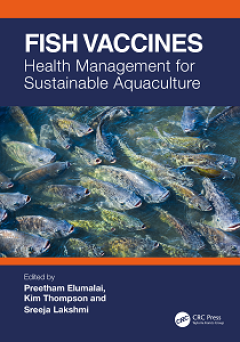
Fish vaccines: health management for sustainable aquaculture
This book is a timely reference text that highlights the role of vaccination in the fast-growing aquaculture industry. It discusses topics such as vaccine formulation, vaccine delivery, and enhancing the immune response of fish using nanoparticles. Information related to vaccine safety, ethical approval, and regulations is also discussed, together with dissemination of vaccines to fish farms ac…
- Edisi
- Ed. 1
- ISBN/ISSN
- 9781003388548
- Deskripsi Fisik
- -
- Judul Seri
- -
- No. Panggil
- 597 PRE f
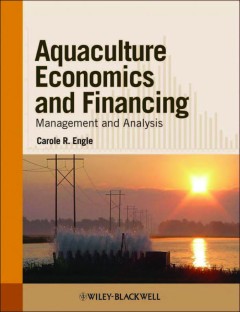
Aquaculture economics and financing: management and analysis
The volume of aquaculture production worldwide has grown at a rate of approximately 8% per year over the last decade. Continued growth is expected due to increases in world population and the apparent leveling off of the capture of many commercial fisheries species. Farmed salmon and shrimp production have grown to dominate their respective world markets over the last several decades. More re…
- Edisi
- Ed. 1
- ISBN/ISSN
- 9780813813011
- Deskripsi Fisik
- 274 hlm
- Judul Seri
- -
- No. Panggil
- 338.3 CAR a
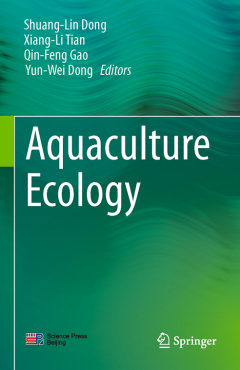
Aquaculture ecology
This book introduces aquaculture ecology as a science of the interaction between commercial aquatic organisms as well as their farming activities and the environment, including the rationales of building and management of aquaculture systems. This book covers productivity and carrying capacity, effects of cyclical fluctuation of environmental factors on aquatic organisms, biological control of …
- Edisi
- Ed. 1
- ISBN/ISSN
- 9789811954863
- Deskripsi Fisik
- -
- Judul Seri
- -
- No. Panggil
- 639.31 SHU a
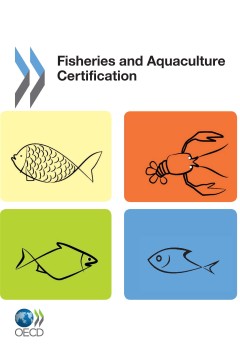
Fisheries and aquaculture certification
This report considers the growing trend in information requirements for seafood products in general with a focus on the distinct sustainability features of wild capture fisheries and aquaculture. Concerns about sustainability and the effectiveness of fisheries management have resulted in demand from NGOs, retailers and consumers for assurances that the food they purchase has been sustainably pr…
- Edisi
- Ed. 1
- ISBN/ISSN
- 9789264119611
- Deskripsi Fisik
- 105 hlm
- Judul Seri
- -
- No. Panggil
- 639.31 OEC f
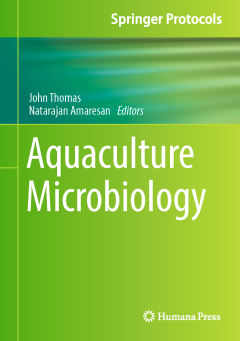
Aquaculture microbiology
This manual consists of several chapters that deal with the techniques involved in the study of aquatic pathogens that cause infections, especially in fish. It covers a wide range of basic and advanced techniques associated with research on the isolation and identification of bacterial, viral, and fungal pathogens, and probiotic bacteria. In addition, it addresses the treatment of pathogens usi…
- Edisi
- Ed. 1
- ISBN/ISSN
- 9781071630327
- Deskripsi Fisik
- -
- Judul Seri
- -
- No. Panggil
- 639.31 JOH a
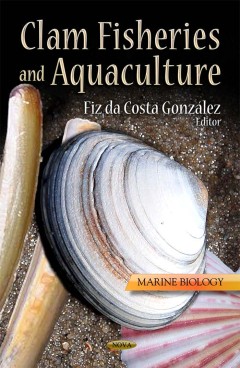
Clam fisheries and aquaculture
Mollusca is one of the largest phyla in the animal kingdom, over 50,000 species having been described, thus comprising more than a half of the marine species. Molluscs are scientifically and economically important invertebrates, representing 8% of all captured marine species. One of the six molluscan classes is Bivalvia, which is composed of both marine and freshwater animals enclosed in shells…
- Edisi
- Ed. 1
- ISBN/ISSN
- 9781622575213
- Deskripsi Fisik
- 391 hlm
- Judul Seri
- -
- No. Panggil
- 639.9 FIZ c
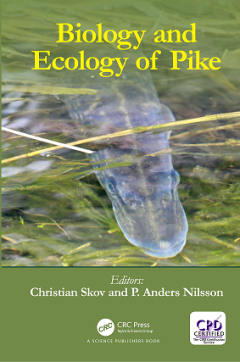
Biology and ecology of pike
The pike (Esox lucius Linnaeus, 1758), or northern pike as it is called in most of North America, is an iconic fish species that has fascinated mankind throughout history. Its large size and characteristic appearance have likely contributed to various tall stories, some of which are beautifully saved in Izaak Walton’s “The Compleat Angler or the Contemplative man’s Recreation” from 1653…
- Edisi
- Ed. 1
- ISBN/ISSN
- 9781482262902
- Deskripsi Fisik
- -
- Judul Seri
- -
- No. Panggil
- 597.5 CHR b
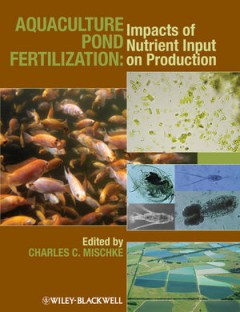
Aquaculture pond fertilization: impacts of nutrient input on production
The vast majority of freshwater aquaculture is conducted in ponds. With every species cultured, whether cultured intensively or extensively, there is usually at least one pond production stage where pond fertilization is important. Although pond fertilization is an important cornerstone in aquaculture production, fertilization information is generally dispersed throughout scientific journal ar…
- Edisi
- Ed. 1
- ISBN/ISSN
- 9780470959220
- Deskripsi Fisik
- 314 hlm
- Judul Seri
- -
- No. Panggil
- 639.31 CHA a
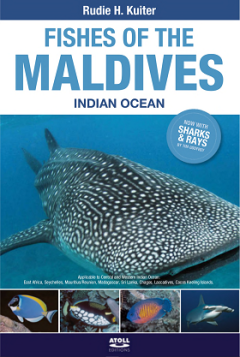
Fishes of the Maldives: Indian Ocean
This is the second edition of the book that was originally published as Photo Guide to Fishes of the Maldives, by Rudie H Kuiter, in 1998. Fishes of the Maldives Indian Ocean has been fully revised and substantially expanded to include, for the first time, all the sharks and rays of the Maldives known within a divers depth range. In the present volume, changes have been made to the scientific L…
- Edisi
- Ed. 2
- ISBN/ISSN
- 9781876410254
- Deskripsi Fisik
- -
- Judul Seri
- -
- No. Panggil
- 597.5495 RUD f
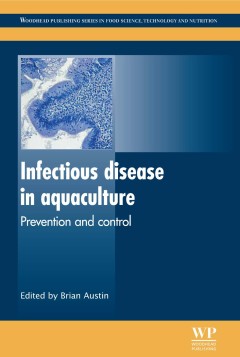
Infectious disease in aquaculture: prevention and control
Part 1. IMMUNE RESPONSES IN FISH AND SHELLFISH AND THEIR IMPLICATIONS FOR DISEASE CONTROL. The innate and adaptive immune system of fish -- Crustacean immune responses and their implications for disease control -- Immune responses in molluscs and their implications for disease control -- Stress and resistance to infectious diseases in fish -- Part 2. ADVANCES IN DISEASE DIAGNOSTICS, VETERINARY…
- Edisi
- Ed. 1
- ISBN/ISSN
- 9780857095862
- Deskripsi Fisik
- 550 hlm
- Judul Seri
- -
- No. Panggil
- 639.8 BRI i
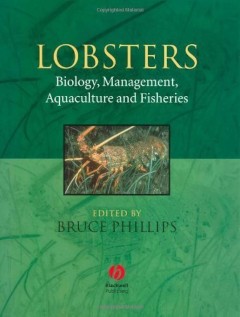
Lobsters: biology, management, aquaculture and fisheries
The stimulus for the 2006 version of this book was the publication of the Biology of Freshwater Crayfi sh , edited by David M. Holdich, in 2002, published by Blackwell Science Ltd. The Holdich book was different to most other texts dealing with similar material, in that although there are topics such as growth, nutrition and reproduction and behaviour, the full material for the commercial speci…
- Edisi
- Ed. 1
- ISBN/ISSN
- 9780470671139
- Deskripsi Fisik
- 503 hlm
- Judul Seri
- -
- No. Panggil
- 595.3 BRU l

Governability of fisheries: theory and applications
Around four decades ago professionals working on fi sheries problems generally agreed there was a crisis in the world’s fi sheries. The world’s fi sh catch had leveled off, many formerly productive fi sheries were badly depleted, and a few had utterly collapsed. Since then some progress has been made, but the overall trend worldwide has continued downward. True, the world’s total fish sup…
- Edisi
- Ed. 1
- ISBN/ISSN
- 9789400761070
- Deskripsi Fisik
- 384 hlm
- Judul Seri
- -
- No. Panggil
- 639.31 MAA g

Principles of sustainable aquaculture
Principles of Sustainable Aquaculture aims to provide students, practitioners and the diverse and varied stakeholders committed to developing sustainable aquaculture practices with evidence and knowledge of better practices and guidance on appropriate adaptation and uptake promotion in other environmental, geographic, socio-economic and political settings. This book has a focus on emerging them…
- Edisi
- Ed. 1
- ISBN/ISSN
- 9780203127438
- Deskripsi Fisik
- 321 hlm
- Judul Seri
- -
- No. Panggil
- 639.8 STU p

Becoming salmon: aquaculture and the domestication of a fish
Salmon have come a long way. Th ey were here before us. Th ey were the backbone of coastal human livelihoods, a reliable and seasonal resource, a conduit of nutrients from the depths of distant oceans, conveniently delivered where the land meets the sea. Our history together goes way back. But recently it took off in a new direction. Th is book is an ethnography of a “city of fi sh.” It tel…
- Edisi
- Ed. 1
- ISBN/ISSN
- 9780520961838
- Deskripsi Fisik
- 232 hlm
- Judul Seri
- -
- No. Panggil
- 639.3 MAR b
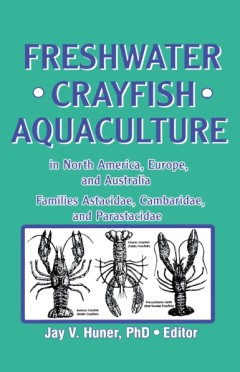
Freshwater crayfish aquaculture
- Edisi
- Ed. 1st
- ISBN/ISSN
- 1560220392
- Deskripsi Fisik
- -
- Judul Seri
- -
- No. Panggil
- 332.71 HUN f
- Edisi
- Ed. 1st
- ISBN/ISSN
- 1560220392
- Deskripsi Fisik
- -
- Judul Seri
- -
- No. Panggil
- 332.71 HUN f
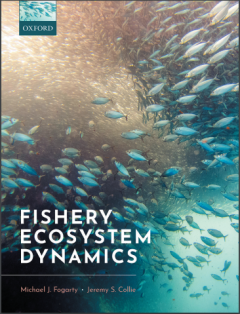
Fishery ecosystem dynamics
Fisheries supply a critically important ecosystem service—providing high quality food resources to a burgeoning human population. Fishery products are among the most widely traded commodities in global markets. Fish and shellfish provide 3.1 billion people with nearly 20 per cent of their annual consumption of animal protein (FAO 2018). Perhaps more significantly, food derived from aquatic so…
- Edisi
- Ed. 1
- ISBN/ISSN
- 9780198768944
- Deskripsi Fisik
- -
- Judul Seri
- -
- No. Panggil
- 639.2 MIC f
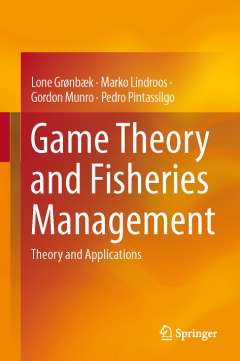
Game theory and fisheries management: theory and applications
This book is the first to present in a systematic manner the application of game theory to fisheries management at both international and national levels. Strategic interaction among fishers and nations exploiting fishery resources is an inescapable fact of life. This has long been recognized at the international level, and is becoming increasingly recognized at the national/regional level. It …
- Edisi
- Ed. 1
- ISBN/ISSN
- 9783030401122
- Deskripsi Fisik
- x, 155 hlm.
- Judul Seri
- -
- No. Panggil
- 338.372 LON g
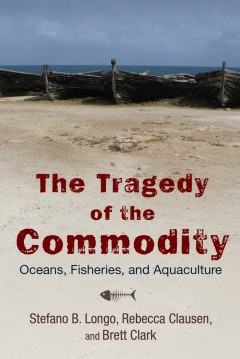
The tragedy of the commodity: oceans, fisheries, and aquaculture
With this book, we draw attention to one of the crises that faces the World Ocean. As social scientists, we have conducted research in the areas of fishing and aquaculture, and have come to recognize the central significance of marine systems for human life. Individually and together, we have published many articles focused on fisheries and aquaculture. This work has appeared in various scholar…
- Edisi
- Ed. 1
- ISBN/ISSN
- 9780813565798
- Deskripsi Fisik
- 275 hlm
- Judul Seri
- -
- No. Panggil
- 639.2 STE t
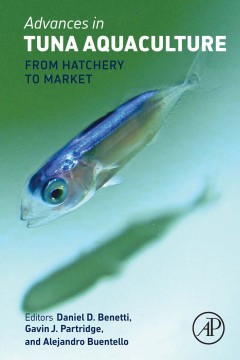
Advances in tuna aquaculture: from hatchery to market
Advances in Tuna Aquaculture is the first book that encompasses all aspects related to this industry and it merges them into a state-of-the-art compendium that points the reader in the right direction, whether a science student, a researcher, a fisherman, or a farmer. It presents developments in tuna aquaculture throughout the world, from ranching wild juvenile fish to closed-cycle cultivation …
- Edisi
- Ed. 1
- ISBN/ISSN
- 9780124114593
- Deskripsi Fisik
- 375 hlm
- Judul Seri
- -
- No. Panggil
- 639.31 DAN a
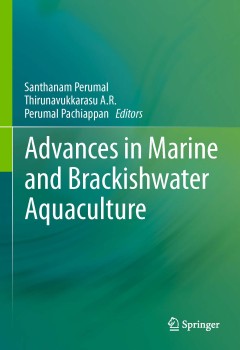
Advances in marine and brackishwater aquaculture
The marine and brackishwater aquaculture is defined as the rearing of marine or brackishwater organisms under controlled environmental and feed conditions. Aquaculture is a rapidly growing food production industry, accounting for over one-third of global fisheries production and is a lucrative industry in the domestic and international markets.
- Edisi
- Ed. 1
- ISBN/ISSN
- 9788132222712
- Deskripsi Fisik
- 266 hlm
- Judul Seri
- -
- No. Panggil
- 577.7 SAN a
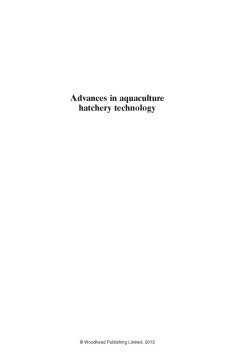
Advances in aquaculture hatchery technology
It is clear that global aquaculture production needs to expand signifi cantly, even to maintain average per capita consumption of foodfish, let alone to increase it (as is desirable to enhance human nutrition and food supply). Capture fisheries cannot meet these demands. This fact, and the growing realisation that responsible, sustainable aquaculture is potentially beneficial for the environmen…
- Edisi
- Ed. 1
- ISBN/ISSN
- 9780857097460
- Deskripsi Fisik
- 670 hlm
- Judul Seri
- -
- No. Panggil
- 639.3 GEO a
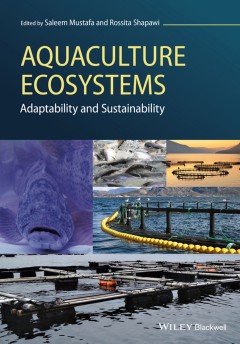
Aquaculture ecosystems: adaptability and sustainability
Aquaculture continues to maintain its position as a major provider of protein‐rich seafood. Capture fisheries cannot meet the demand. Aquaculture must grow rapidly to make up for the shortfall in seafood supply by addressing the mounting challenges that constrain its expansion.
- Edisi
- Ed. 1
- ISBN/ISSN
- 9781118778548
- Deskripsi Fisik
- 419 hlm
- Judul Seri
- -
- No. Panggil
- 639.8 SAL a
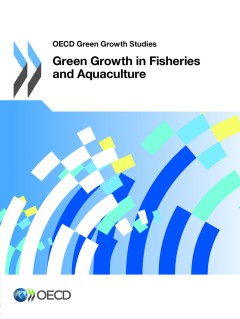
Green growth in fisheries and aquaculture
Fisheries and aquaculture depend directly on the natural environment for their productive capacity. The challenges for fisheries and aquaculture policy makers are to deliver on economic and social goals while respecting the natural biological limits of the resource. How to succeed in this has been a central subject of work by the OECD’s Committee for Fisheries.
- Edisi
- Ed. 1
- ISBN/ISSN
- 9789264232143
- Deskripsi Fisik
- 116 hlm
- Judul Seri
- -
- No. Panggil
- 639.31 OEC g
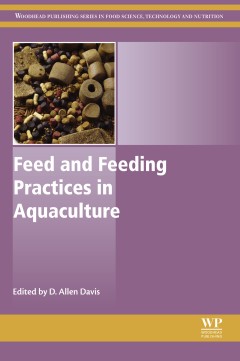
Feed and feeding practices in aquaculture
- Edisi
- Ed. 1
- ISBN/ISSN
- 9780081005071
- Deskripsi Fisik
- 433 hlm
- Judul Seri
- -
- No. Panggil
- 639.31 ALL f
- Edisi
- Ed. 1
- ISBN/ISSN
- 9780081005071
- Deskripsi Fisik
- 433 hlm
- Judul Seri
- -
- No. Panggil
- 639.31 ALL f
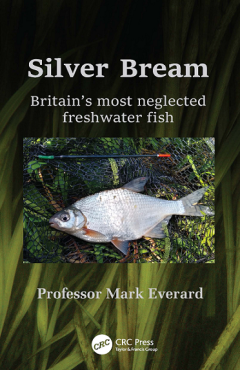
Silver bream: Britain's most neglected freshwater fish
This book is dedicated to the Silver bream, a fish too long neglected by anglers, wildlife enthusiasts and science. In fact, this is the first book ever devoted to this freshwater fish. Scientist, author and broadcaster Dr Mark Everard introduces the biology of the silver bream, angling for this fish, and its diverse social quirks and values
- Edisi
- Ed. 1
- ISBN/ISSN
- 9781003311041
- Deskripsi Fisik
- -
- Judul Seri
- -
- No. Panggil
- 799.17 MAR s
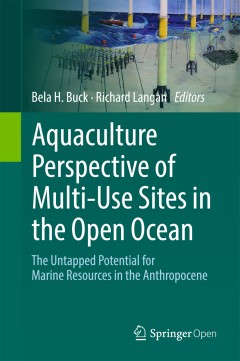
Aquaculture perspective of multi-use sites in the open ocean: the untapped po…
This edited volume “Aquaculture Perspective of Multi-Use Sites in the Open Ocean: The Untapped Potential for Marine Resources in the Anthropocene” comes at a critical time for our planet. A 2015 article in Science updated the long-range population projections of the United Nations in 1992. In contrast to the 1992 UN estimate, the Science paper showed no stabilization of the world’s popula…
- Edisi
- Ed. 1
- ISBN/ISSN
- 9783319511597
- Deskripsi Fisik
- 533 hlm
- Judul Seri
- -
- No. Panggil
- 551.4 BEL a
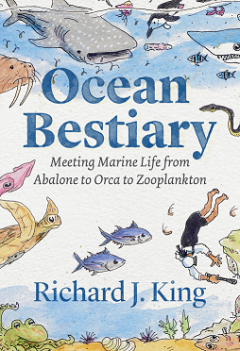
Ocean bestiary: meeting marine life from abalone to orca to zooplankton
What is a bestiary? In classical and medieval times, the bestiary described both familiar and exotic creatures, combining natural history with folklore and moral lessons. A medieval bestiary will tell us that the wolf, for example, is a predator of the earth and sometimes the sky, strong in shoulders and jaw, who cunningly approaches its prey upwind. In the dark, its shining eyes are strangely …
- Edisi
- -
- ISBN/ISSN
- 9780226825809
- Deskripsi Fisik
- -
- Judul Seri
- Oceans in Depth
- No. Panggil
- 591.77 RIC o
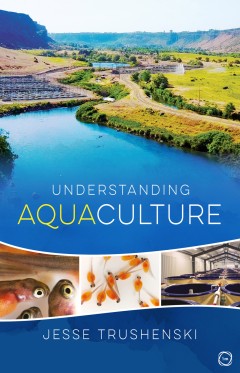
Understanding aquaculture
Do you enjoy fishing? Do you enjoy seafood? Do you like the idea of your children and your children’s children being able to enjoy the same? If so, read on. This book is about aquaculture. It is about what aquaculture can and does provide the human race. It is about what aquaculture does well and where mistakes have been made.
- Edisi
- Ed. 1
- ISBN/ISSN
- 9781789180114
- Deskripsi Fisik
- 276 hlm
- Judul Seri
- -
- No. Panggil
- 639.31 JES u
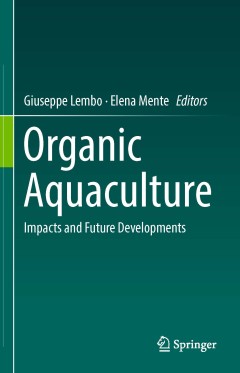
Organic aquaculture: impacts and future developments
In 2015, world aquaculture production reached 106 million tonnes, while European aquaculture production reached 2.98 million tonnes of seafood, with a value over 11 billion USD (FAO, 2017). Although the world aquaculture production is still the fastest-growing food-producing sector in the world, the European one increased by about 136% in the last 10 years. Organic aquaculture represents 4.7% o…
- Edisi
- Ed. 1
- ISBN/ISSN
- 9783030056032
- Deskripsi Fisik
- 211 hlm
- Judul Seri
- -
- No. Panggil
- 639.31 GIU o
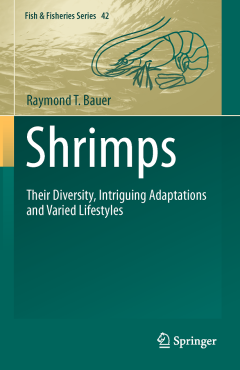
Shrimps: their diversity, intriguing adaptions and varied lifestyles
Shrimps are animals known to most people as nutritious and tasty food items. Shrimp fisheries and aquaculture are a vital part of US and world economies. These crustaceans are key ecological and food-web components of marine and freshwater habitats. Shrimps occur in all oceanic depths and latitudes. The 4400 species of decapod shrimps are amazingly diverse in size, shape, coloration, and natura…
- Edisi
- Ed. 1
- ISBN/ISSN
- 9783031209666
- Deskripsi Fisik
- -
- Judul Seri
- -
- No. Panggil
- 639.5 RAY s
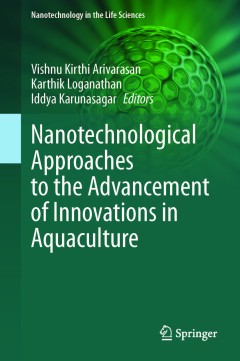
Nanotechnological approaches to the advancement of innovations in aquaculture
Nanotechnology is a cutting-edge science and technology with numerous scientific and technological applications. Rapid breakthroughs in nanosciences and nanotech nologies have opened up new possibilities for many industrial and consumer sec tors, including aquaculture and agriculture and associated fields, which have recently been considered a hotspot of a new industrial revolution.
- Edisi
- Ed. 1
- ISBN/ISSN
- 9783031155192
- Deskripsi Fisik
- 189 hlm
- Judul Seri
- Nanotechnology in the Life Sciences
- No. Panggil
- 620.5 VIS n
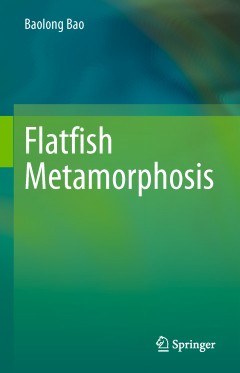
Flatfish metamorphosis
Developmental biology is the study of growth, development, regeneration, sexual and asexual reproduction, metamorphosis, and the growth and differentiation of stem cells in the adult organism. Such studies used to be carried out by using morphological, anatomical, and microscopic approaches, and the scope of understanding was mostly limited to answering what happens with each of these processes…
- Edisi
- Ed. 1
- ISBN/ISSN
- 9789811978593
- Deskripsi Fisik
- -
- Judul Seri
- -
- No. Panggil
- 591.3 BAO f
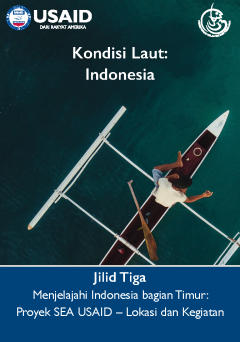
Kondisi laut: Indonesia, jilid tiga: menjelajahi Indonesia bagian Timur: proy…
Pada tanggal 21 Maret 2016, Tetra Tech diberi mandat untuk melaksanakan Proyek SEA USAID oleh Misi USAID Indonesia. Proyek ini adalah inisiatif lima tahun yang memberikan dukungan kepada Pemerintah Indonesia untuk memperbaiki tata kelola sumber daya kelautan dan perikanan dan untuk melestarikan keanekaragaman hayati di tingkat lokal, kabupaten, provinsi, dan nasional. Proyek SEA USAID memfokusk…
- Edisi
- Jil. 3
- ISBN/ISSN
- 9786025285875
- Deskripsi Fisik
- 206 hlm.
- Judul Seri
- -
- No. Panggil
- 577.6 ELE k
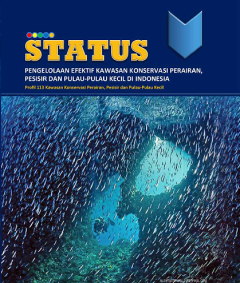
Status pengelolaan efektif kawasan konservasi perairan, pesisir dan pulau-pul…
Kehadiran buku ini diharapkan mampu memberikan sajian informasi kekayaan sumberdaya hayati dan ulasan yang memadai atas upaya pengelolaan efektif kawasan konservasi perairan, pesisir dan pulau-pulau kecil yang telah dilakukan serta dapat dipetik pembelajaran dalam rangka pengembangan pengelolaan efektif kawasan konservasi dimasa yang akan datang.
- Edisi
- Ed. 1
- ISBN/ISSN
- 9786027913226
- Deskripsi Fisik
- -
- Judul Seri
- -
- No. Panggil
- 577.51 AGU s
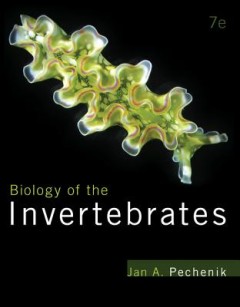
Biology of the invertebrates
- Edisi
- Ed. 7th
- ISBN/ISSN
- 9780073524184
- Deskripsi Fisik
- -
- Judul Seri
- -
- No. Panggil
- 592 PEC b
- Edisi
- Ed. 7th
- ISBN/ISSN
- 9780073524184
- Deskripsi Fisik
- -
- Judul Seri
- -
- No. Panggil
- 592 PEC b
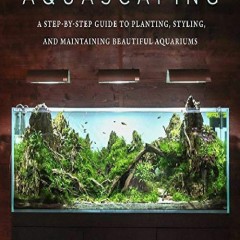
Aquascaping
- Edisi
- Ed. 1st
- ISBN/ISSN
- 9781510753396
- Deskripsi Fisik
- -
- Judul Seri
- -
- No. Panggil
- 639.34 FAR a
- Edisi
- Ed. 1st
- ISBN/ISSN
- 9781510753396
- Deskripsi Fisik
- -
- Judul Seri
- -
- No. Panggil
- 639.34 FAR a
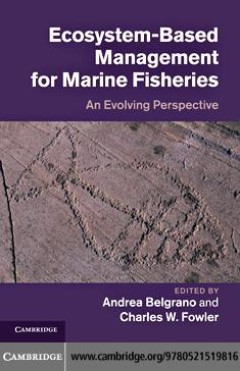
Ecosystem-based management for marine fisheries
The necessity of an ecosystem approach (EA) to fishery management has been gaining worldwide recognition in recent years. This concept provides an attractive alternative to viewing fisheries mainly as a profit-oriented economic enterprise, especially given a growing dissatisfaction with a long, mixed, and in some cases dismal record of resource overfishing, depletion, and collapse. Though …
- Edisi
- Ed.1
- ISBN/ISSN
- 9780521519816
- Deskripsi Fisik
- 408 hlm
- Judul Seri
- -
- No. Panggil
- 639 AND e
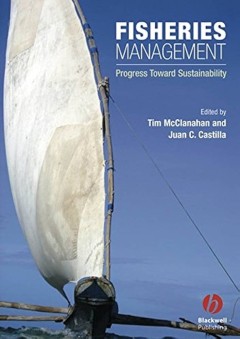
Fisheries management
It is now common knowledge that marine fisheries are in trouble and this trouble extends from near to offshore areas and affects most regions of the Earth. The prob- lems have arisen in the context of a well-developed fisheries science that has largely focused on the resource and the biophysical aspects that control the resource, but has paid less attention to the social aspects of the …
- Edisi
- Ed.1
- ISBN/ISSN
- 1405139323
- Deskripsi Fisik
- 343 hlm
- Judul Seri
- -
- No. Panggil
- 639 MCC f
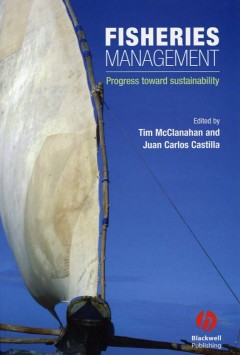
Fisheries management: progress towards sustainability
Members of the Pew Fellows Program in Marine Conservation organized this book through their annual meetings and a discussion group on community-based fisheries management. Discussion group members asked knowledgeable co-authors to assist with the development of their chapters, and other authors and chapters were invited to participate based on measures of management progress reported in the lar…
- Edisi
- Ed. 1
- ISBN/ISSN
- 9781405139328
- Deskripsi Fisik
- 343 hlm
- Judul Seri
- -
- No. Panggil
- 338.372 TIM f
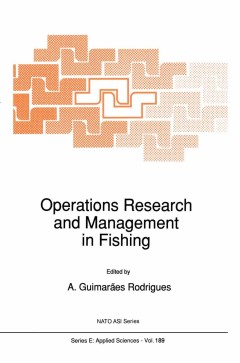
Operations Research and Management in Fishing
Over eleven years have passed since the last NATO sponsored meeting on Fishing which took the form of a Conference held in Trondheim in 1979. The proceedings contained in this book consist of papers presented in support of an Advanced Study Institute on Operations Research and Management in Fishing held at P6voa de Varzim, Portugal from March 25 to April 7 1990. It was originally intended to us…
- Edisi
- -
- ISBN/ISSN
- 9789401054485
- Deskripsi Fisik
- 328 page
- Judul Seri
- -
- No. Panggil
- 381.4 GUI o
 Karya Umum
Karya Umum  Filsafat
Filsafat  Agama
Agama  Ilmu-ilmu Sosial
Ilmu-ilmu Sosial  Bahasa
Bahasa  Ilmu-ilmu Murni
Ilmu-ilmu Murni  Ilmu-ilmu Terapan
Ilmu-ilmu Terapan  Kesenian, Hiburan, dan Olahraga
Kesenian, Hiburan, dan Olahraga  Kesusastraan
Kesusastraan  Geografi dan Sejarah
Geografi dan Sejarah